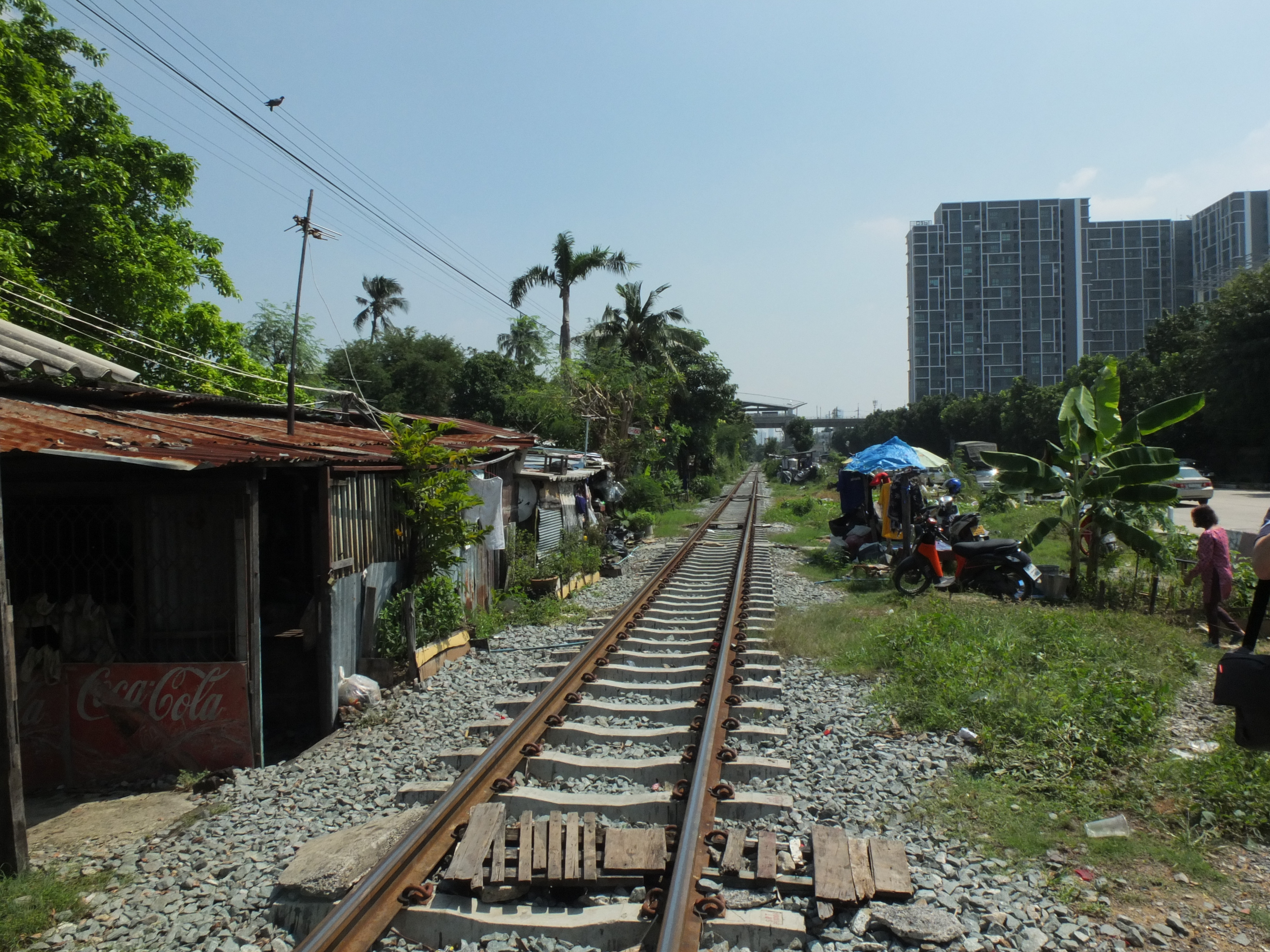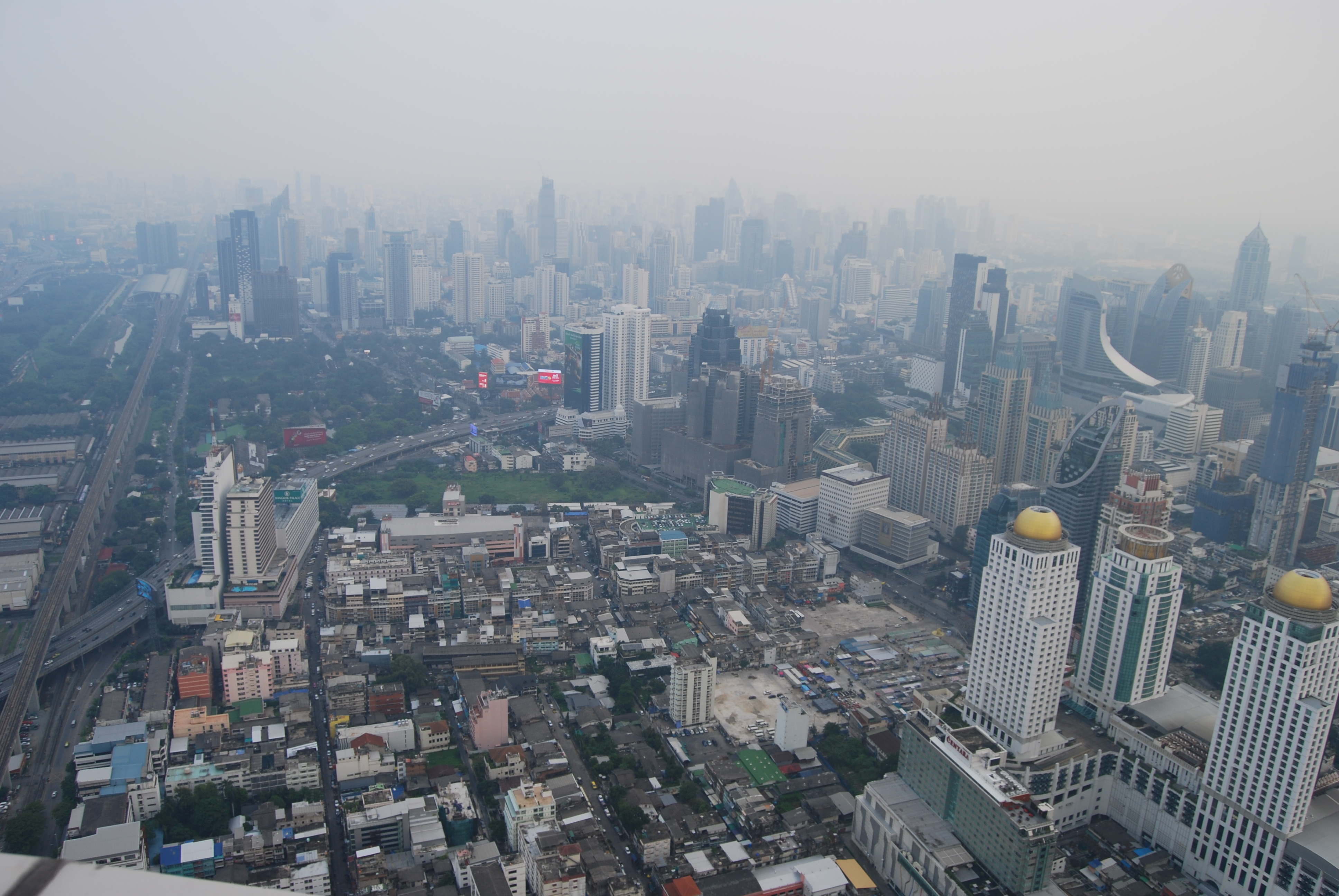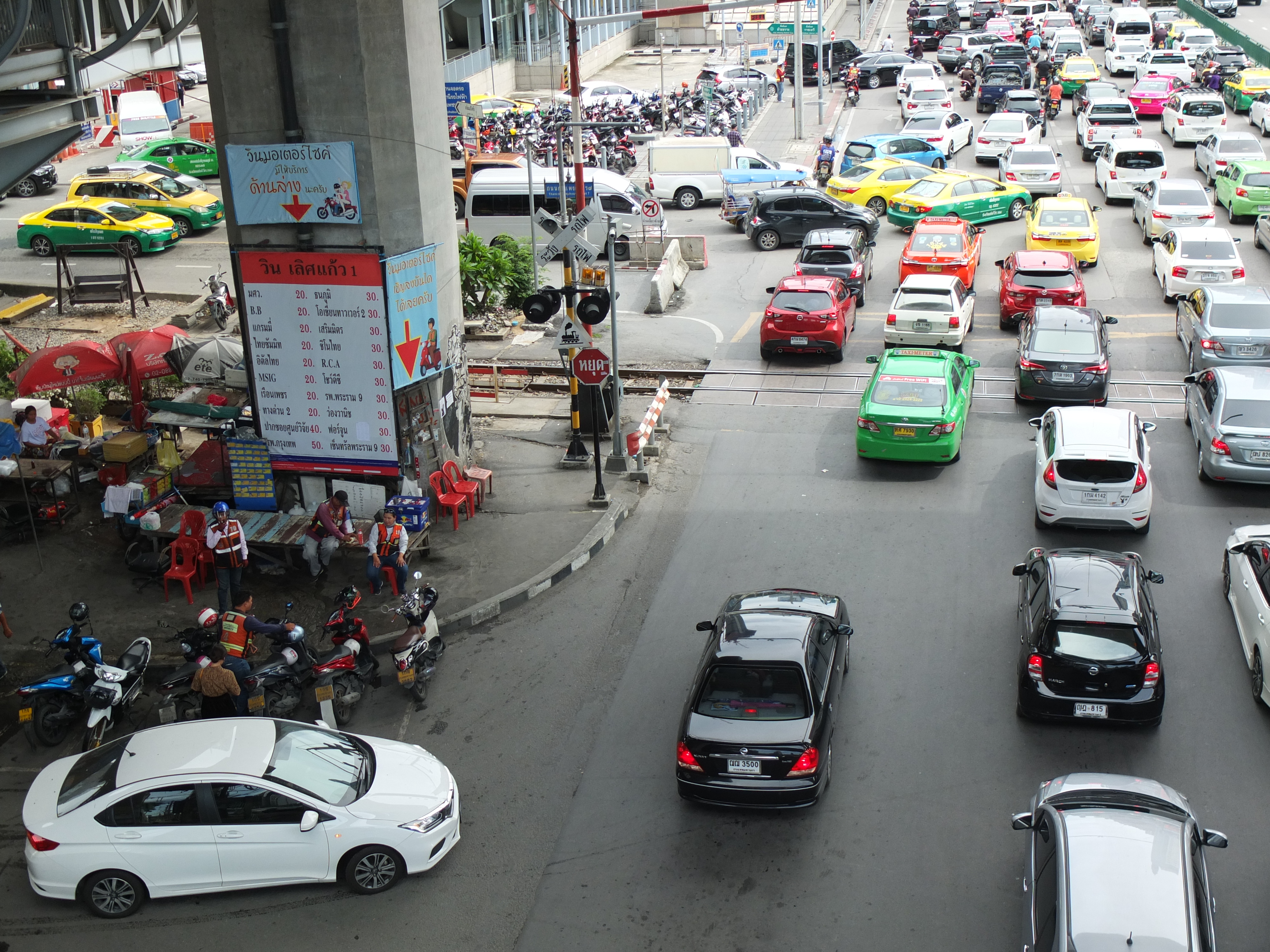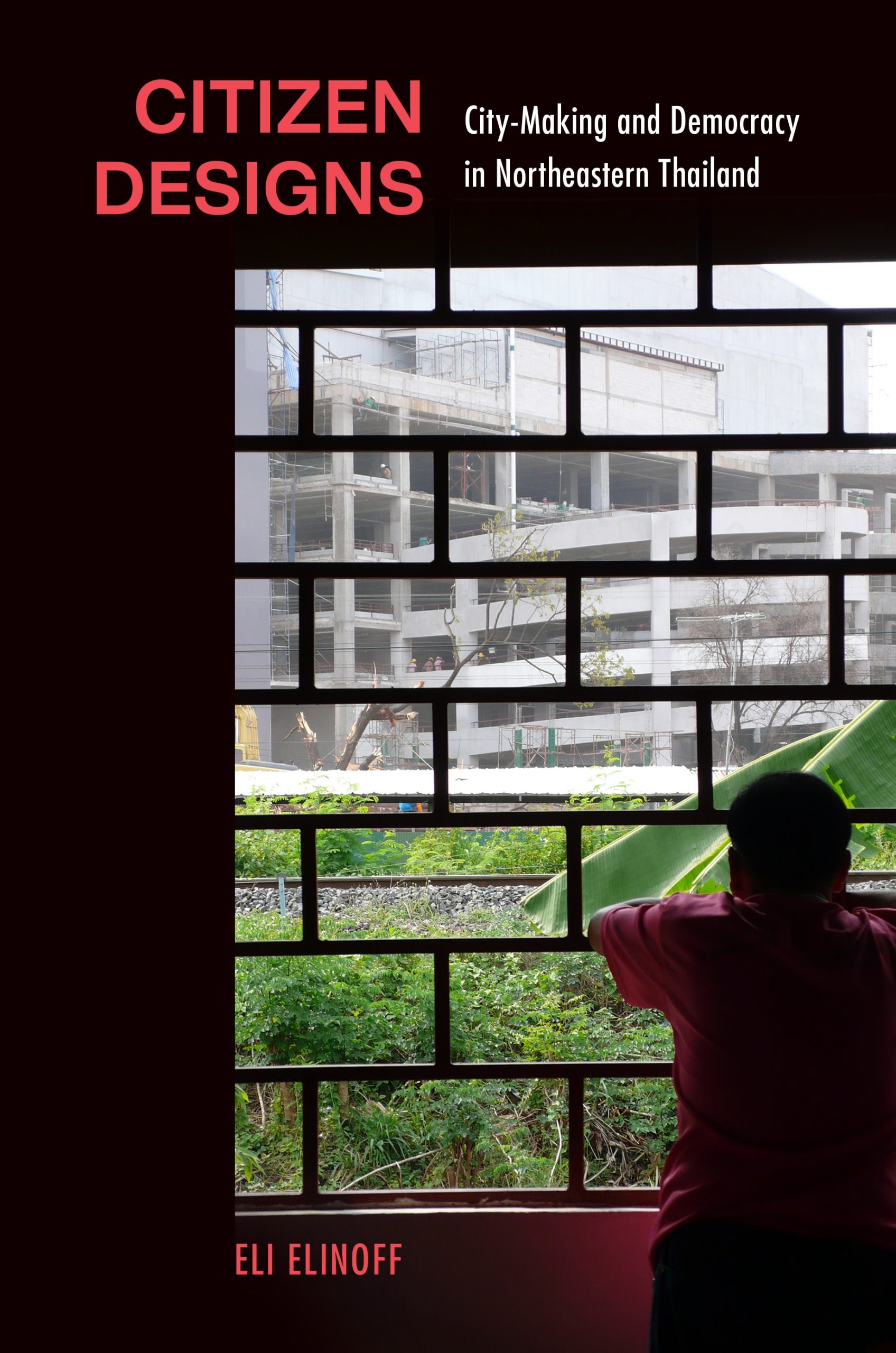Since 2015, urban redevelopment projects have been initiated in Bangkok, and ongoing gentrification has placed pressure on urban informality to operate in the city. This is likely to hinder the survival of the urban lower class and create social tensions… the city is now at an important turning point in terms of changes in the fundamental sources of improved well-being, writes Tamaki Endo
_______________________________________________
Asian megacities are now leading centres of economic development in the world, serving as the centre of production, finance, and consumption. In contrast, urban inequality is widening and forming a multi-layered stratification within cities. Substantial changes have occurred in the economic and social structures of cities, accelerated by globalisation and rapid urbanisation. Megacities are not only spaces of opportunity but also spaces of risk (Endo and Shibuya, 2019). Rapid and compressed development leads megacities of the Global South, such as Bangkok and Shanghai, to develop a complex multi-layered structure, where the phenomena of both developing and developed countries co-occur (Goto, Endo and Ito, 2021; Whittaker et al., 2020). Thus, the risk response process becomes even more complicated. Interestingly, developed cities, such as Tokyo, have recently shared the complexity of multi-layered stratification and challenges. Ironically, these similarities have been partly caused by the deterioration of the social security system and the informalisation of the labour market observed in Tokyo over the past two decades.
Urban residents face various types of risks in their daily lives. As globalisation progresses, people’s well-being is increasingly affected by both domestic and external factors for socioeconomic (objective) and subjective well-being. Urban life is inevitably a risk-response process. Sometimes, shocks and crises occur simultaneously across borders, imposing the same challenges on these regions. However, the impact of urban risks and shocks manifests unevenly among different social classes and groups owing to their levels of sensibility, vulnerability, and capability. Survival strategies may vary among classes and cities and occur at different levels, such as the individual, household, community, and societal levels. Damage can accumulate during one’s life course, and if it is persistent, it can constrain future choices. Thus, in an era of uncertainty, it is important to understand how people deal with risks and vulnerabilities and exercise survival strategies to recover smoothly from shocks. The uniqueness of different groups appears to result from the interaction of one’s socioeconomic conditions, community configuration, and social settings.

The book Urban Risk and Well-Being in Asian Mega Cities: Urban lower and middle classes in Bangkok, Shanghai, and Tokyo (Endo and Shibuya, 2023) analyses the characteristics and complexities of the lower and middle classes’ urban well-being in Asian megacities. With the aforementioned research interests, the initial research project was launched ten years ago with five colleagues in the faculty, including economists and sociologists, immediately before the Great East Japan Earthquake. We conducted surveys of approximately 2,700 respondents in three cities between 2011 and 2014 and follow-up surveys afterwards. Needless to mention, the recent pandemic, risk, and crisis management became even more critical issues for urban well-being. Employing an interdisciplinary approach by combining quantitative and qualitative analyses with a historical review, we analysed the types of risks people perceive and experience in their urban life, how they respond to them, what types of social networks and formal and informal institutions they utilise, and how the quantity and quality of social networks and formal safety nets affect their subjective well-being, such as life satisfaction. By combining multidisciplinary approaches, we attempted to indicate that differences are not necessarily ‘cultural’ but defined by the socioeconomic and historical contexts of certain periods.
Although we found many commonalities among the three cities, key uniqueness appeared mainly in two spheres. The first is the social networks that people utilise when dealing with potential risks and crises. Both the middle and lower classes in Bangkok appeared to have strong personal relationships, which were not limited to family. Many respondents also perceived social networks such as neighbours, colleagues, and alumni as potential support networks. In contrast, social relationships in Shanghai are heavily centred on families, while in Tokyo, relationships are generally distant (see Chapter 6).
The second is the differences appeared in life satisfaction levels. The Bangkok middle and lower classes had the highest average scores for self-reported life satisfaction (between 1 and 10, with 10 being the most satisfied). It was 7.31 and 7.32 for Bangkok for the middle and lower classes, respectively. In contrast, the average score for each group in other cities was 5.84 and 4.84 for Tokyo, 6.95 and 6.12 for Shanghai for the middle and lower classes, respectively (see Chapters 3 and 5).
Previous studies have already shown that citizens of Southeast Asian countries tend to have relatively high subjective well-being scores. For example, an Asian barometer revealed that survey respondents from Thailand, the Philippines, and other Southeast Asian countries showed higher life satisfaction levels than those in Japan, China, and Korea (Inoguchi et al., 2006; Suehiro, 2009). These data are often quoted to prove that the stage of economic development does not simply correlate with subjective well-being level. Our data also confirmed that the present economic development stage does not guarantee better subjective well-being (see Chapters 3, 4, and 7). However, we need to be careful in saying that Southeast Asia is ‘culturally’ optimistic or East Asia is ‘culturally’ pessimistic, because historical analysis shows that this is changeable.

One of the most surprising survey results, or the paradox of our research, was the exceptionally low score of the Tokyo lower class regarding life satisfaction. Approximately 30% of the Tokyo lower class reported scores between 1 and 3 out of 10. In contrast, only five persons in the middle class and nine persons in the lower class chose a score between 1 and 3 in Bangkok. A historical review of Tokyo, however, indicates that low satisfaction is more related to socioeconomic structural changes rather than the Japanese being ‘culturally’ pessimistic. Time series data of life satisfaction surveyed by the Tokyo Metropolitan Government revealed that the percentage of people in the lower class who reported being ‘satisfied’ with their lives was larger than those who were ‘dissatisfied’. This was true until the 1990s, but a reversal occurred in the early 2000s. By carefully examining other survey items, Imaizumi attempted to indicate the driving force behind this changing trend in subjective well-being (see Chapter 4). I skip these details here; however, it is noted here that Tokyo’s lower class’s subjective well-being began to decline because of economic stagnation, the deterioration of the social security system, and employment problems. The lower classes in both the 1980s and the 2010s faced economic difficulties; however, the former evaluated their lives more positively, with positive prospects for their future.
The Tokyo case is suggestive of Bangkok and Shanghai, because these emerging cities are now facing turning points with complex socioeconomic challenges. Regarding Thailand, the World Value Survey of 2021 showed that there are gaps in subjective well-being and a sense of ‘trust’ in institutions among different generations and income groups. Young people tend to show a relatively severe evaluation of present socioeconomic conditions and future prospects (Puey Ungphakorn Institute for Economic Research, 2021). Despite the differences in details, our data from the three cities show that the availability of some social security systems and social networks of both informal and formal institutions have a certain influence on life satisfaction. As inequality increases, whether a high average score for Thai life satisfaction will be sustained or decline gradually might depend on the direction of the future socioeconomic structural transformation.
There are mutual implications that these three cities can draw from each other. First, the Tokyo case showed that not only the individual’s condition and preference but also the social setting matters. Bangkok and Shanghai are still in the process of working on a better social security system, and there are social expectations for improvement that Tokyo’s lower class might not have already had. Second, whether and how formal and informal institutions complement each other is the key to expanding the measures of survival strategies (see Chapters 5 and 6). Access to social security and service quality provided by the government (or formal institutions) have an important impact on subjective well-being (see Chapter 7). However, this alone does not guarantee improved well-being in the absence of alternative mechanisms. In Tokyo, informal institutions have been weakened during the process of extending the social security system. Once public support becomes insufficient and society does not allow much space for informal institutions to operate, vulnerable groups face severe challenges in urban life, which lowers their life satisfaction and future expectations. Since 2015, urban redevelopment projects have been initiated in Bangkok, and ongoing gentrification has placed pressure on urban informality to operate in the city. This is likely to hinder the survival of the urban lower class and create social tensions (Endo, 2022). As mentioned earlier, the city is now at an important turning point in terms of changes in the fundamental sources of improved well-being.
The third implication relates to the methodology and importance of comparative studies in an era of globalisation and uncertainty. We must carefully examine different groups in cities and their conditions rather than adopting a simple hierarchical approach according to the development stage of cities and countries. Commonalities and uniqueness appear differently at different boundaries. Sometimes, the Bangkok middle class shares similar characteristics with other middle classes but not with the Bangkok lower class, or the same can be observed for the lower class as well. However, regarding other aspects, differences may emerge in different cities. As globalisation sometimes brings new challenges simultaneously across regions, mutual learning between the Global South and the Global North has become even more essential.
Theorisation and further empirical analysis are required to understand the interactive mechanism of the specific urban societal setting and the individual/household conditions and where and how boundaries and divisions are created. In the process of bridging quantitative and qualitative analyses, I learned much from my co-researchers from various disciplines, such as economic history and sociology. We might misinterpret each case by focusing only on an empirical analysis of the present situation. Combining city-specific analysis with cross- regional analysis among megacities is challenging, but definitely worth considering. The strength of joint projects with multidisciplinary teams of experts from various fields and regions is that they enable the amalgamation of different perspectives on time (past and present) and place (city-specific and cross-regional).
Finally, the book suggests that since neither individualistic neoliberalism nor fully equipped welfare states offer a realistic scenario for the future of Asian cities, the struggles and constraints of emerging and developed cities have mutual implications for each other. With methodological constraints and possibilities in mind, ten co-researchers and I launched a new project on urban informality in six megacities in Asia and Latin America. We are conducting surveys and collecting data in 2022 and 2023. We expect to draw out new findings which advance the discussion.
References
Endo, Tamaki. 2022. ‘Urban Redevelopment, Spatial Restructuring and Displacement of Communities in Bangkok’, SEAC Working Paper Series No. 3, London School of Economics and Political Sciences, 2022.
Endo, T. and M.K. Shibuya. 2019. ‘Urban risk and surviving strategies: a case study of urban middle class and lower class in Asian megacities’, paper presented at EURA-UAA Conference City Futures Ⅳ, University College Dublin, Ireland, 20 – 22 June.
Endo, T., and M. Shibuya, eds. 2023. Urban Risk and Well-being in Asian Megacities Urban Lower and Middle Classes in Bangkok, Shanghai, and Tokyo, London: Routledge.
Goto, K., T. Endo, T. and A. Ito, eds. 2021. The Asian economy: contemporary issues and challenges. London: Routledge.
Inoguchi, T., A. Tanaka, S. Sonoda, and T. Dadabaev. 2006. Human benefits and values in striding Asia: East Asia in focus country profiles, thematic analyses and sourcebook based on the Asia Barometer survey of 2004. Tokyo: Akashi Shoten.
Puey Ungphakorn Institute for Economic Research. 2021. ‘Socioeconomic structure in Thailand: Vulnerability during transformation (โครงสร้างเศรษฐกิจสังคมไทย: ความเปราะบาง ท่ามกลางความเปลี่ยนแปลง)’, aBRIDGEd, posted on Sep 30th 2021. (in Thai (https://www.pier.or.th/en/abridged/2021/16/#ref-pervaiz2015social, accessed on March 5th 2023)
Suehiro, A. 2009. ‘Happiness and hope in Asia [Ajia no kofuku to kibou].’ in Kibougaku 1 Kibou wo kataru [Social Science of Hope 1: Talking about hope], edited by Institute of Social Science, Y. Genda, and S. Uno, 81-123. Tokyo: Tokyo University Press. (in Japanese)
Whittaker, D., T. Sturgeon, T. Okita and T. Zhu. 2020. Compressed development: time and timing in economic and social development. Oxford: Oxford University Press.
______________________________________________
*Banner photograph by and copyright of the Author.
*The views expressed in the blog are those of the authors alone. They do not reflect the position of the Saw Swee Hock Southeast Asia Centre, nor that of the London School of Economics and Political Science.




